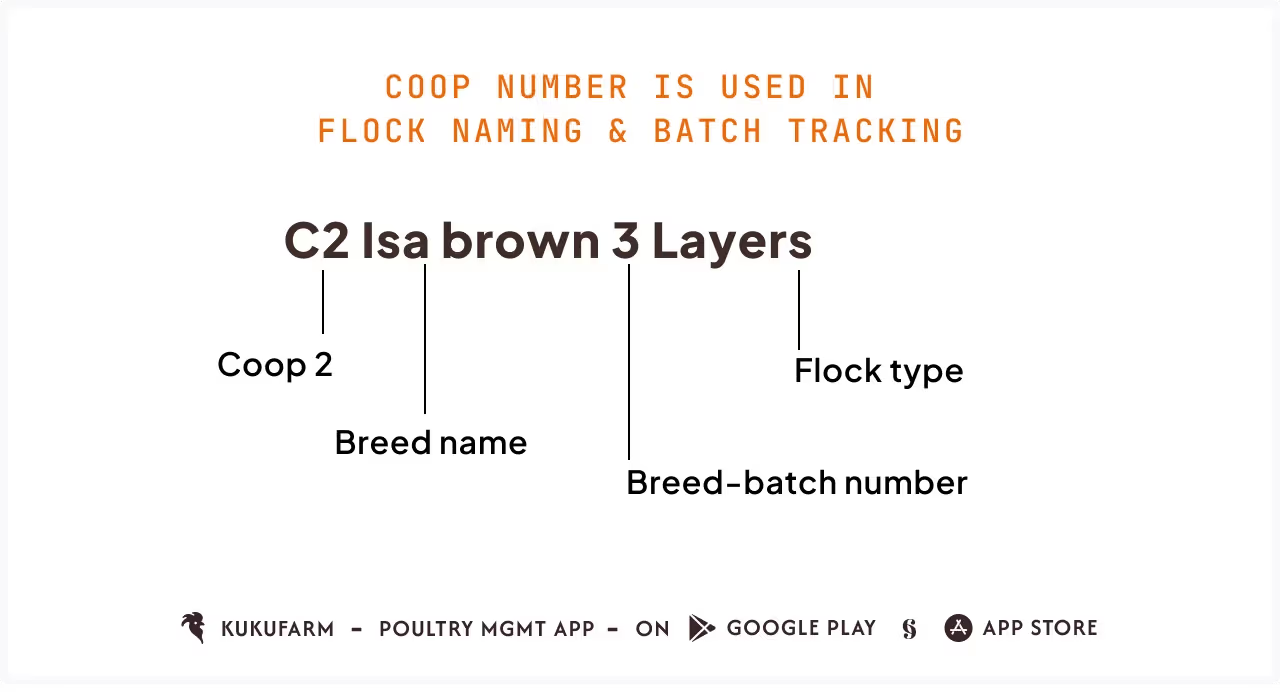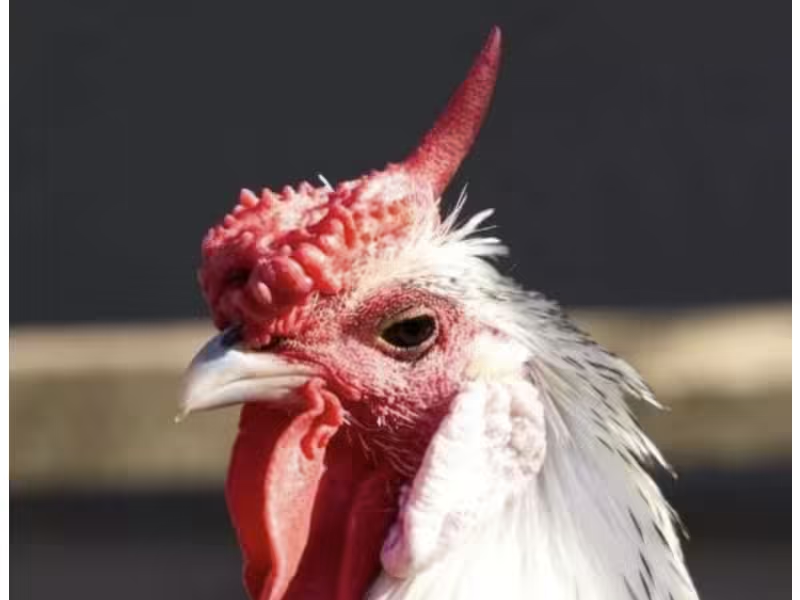When it comes to raising healthy and happy chickens, one of the most noticeable poultry feature is the chicken comb. This fleshy, often brightly colored structure sits atop a chicken’s head and plays a vital role in its overall health and well-being.
Functions of a chicken comb:
- Temperature regulation
- Mating selection
- Health indicator
- Breed identifier
But what exactly is a chicken comb, and why is it so important for your flock? In this article, we’ll explore the different types of chicken combs, what they reveal about your birds, and how to care for them.
You may also be interested in:
- Poultry molting process and how to care for molting chicken
- How to keep accurate poultry records
- Poultry pecking order: The elaborate social rank in a flock
- Why flock hatch date is important in poultry management
- A quick look at chicken’s genetics

What is a Chicken Comb?
At its simplest, a chicken comb is the fleshy, bumpy structure that sits on top of a chicken’s head. It’s made of soft tissue and varies in size, shape, and color, depending on the breed, sex, and overall health of the chicken.
Furthermore, the comb is not just an ornamental feature; it plays several essential roles in the chicken’s biology.

The Function of a Chicken Comb
The chicken comb serves multiple purposes that are crucial to a chicken’s health including:
1. Temperature Regulation
One of the primary functions of the comb is to help regulate the chicken’s body temperature. Chickens don’t sweat like humans do, so they rely on their combs to release heat.
When its is hot, blood vessels in the comb expand, allowing heat to escape. In colder weather, the comb constricts to minimize heat loss. This helps the chicken stay comfortable and avoid overheating or freezing.
2. Sexual Selection
The chicken comb plays a role in sexual selection, especially in roosters. A large, bright red comb typically signals good health and strong genetics.

Roosters with vibrant, well-developed combs are often more attractive to hens, who may choose mates based on these traits. This helps ensure that the strongest, healthiest genes are passed down to the next generation.

3. Health Indicator
The state of a chicken’s comb can be a reliable indicator of its health. A bright red, firm comb usually suggests that a chicken is in good health and well-nourished.
Conversely, a pale, shriveled, or discolored comb can be a sign of stress, illness, or nutritional deficiencies. Regularly monitoring your chickens’ combs can help you spot early signs of trouble.
4. Breed Identification
Interestingly, the chicken comb is not only a functional feature but also a key trait for breed identification. Different chicken breeds have distinct comb types, which can be used to help identify them.
The shape, size, and configuration of the comb, along with its color and texture, serve as distinguishing features that help poultry enthusiasts and breeders identify different breeds with accuracy.

Types of Chicken Combs
The chicken comb comes in various shapes, sizes, and configurations, and these differences are often breed-specific. While some combs are quite common, others are more unusual and specific to certain breeds. Let’s dive deeper into the main types of chicken combs:
1. Single Comb
The single comb is the most familiar and common type. It is tall, upright, and characterized by several serrated points.

This comb type is commonly seen in many traditional chicken breeds such as the Rhode Island Red, Leghorn, Sussex, and Plymouth Rock. It is often bright red, especially in roosters, and is one of the easiest combs to spot.
- Pros: Simple and easy to recognize.
- Cons: Large single combs can be prone to frostbite in cold weather.
2. Rose Comb
The rose comb is small, flat, and lies close to the head. It’s often described as a “rose” or “flower” shape, with several small, rounded points.

The rose comb is especially useful in colder climates because its compact design minimizes the risk of frostbite. Breeds like the Wyandotte, Rhode Island Red, and Hamburg often have this type of comb.
- Pros: Less susceptible to frostbite compared to single combs.
- Cons: It’s not as striking or noticeable as larger combs.
3. Pea Comb
The pea comb is compact, low, and consists of three distinct rows of small points. It’s a smaller, more compact comb that’s ideal for chickens living in cold climates, as it reduces the risk of frostbite.

Breeds like the Ameraucana, Minorca, and Silkie are commonly found with pea combs.
- Pros: Ideal for cold climates, reducing frostbite risk.
- Cons: Can be less visually striking compared to other comb types.
4. V-Shaped Comb
As the name suggests, the V-shaped comb is split into two points, forming a sharp “V” shape.

This type of comb is often seen in Mediterranean breeds like the Andalusian and Campine. The V-shape is not only visually distinctive but also helps with temperature regulation.
- Pros: Unique and eye-catching.
- Cons: Susceptible to frostbite in very cold climates.

5. Buttercup Comb
The buttercup comb is shaped like a small cup with several points protruding from the center.

This unusual comb shape is most commonly seen in breeds like the Sicilian Buttercup. It’s both an ornamental and functional feature, with the distinct shape helping it stand out among other comb types.
- Pros: Distinctive and ornamental.
- Cons: Can be prone to frostbite in extreme cold.
6. Strawberry Comb
The strawberry comb is named for its resemblance to a small strawberry, with a smooth, rounded shape that is somewhat flattened and covered with small bumps.

This comb type is often seen in some breeds of Game chickens and Malay chickens. It’s a low-profile comb that isn’t as prone to damage from extreme weather but still plays an important role in identifying certain breeds.
- Pros: Low profile and less likely to suffer frostbite.
- Cons: Less common and not as visually dramatic as other comb types.
7. Walnut Comb
The walnut comb is a unique and distinctive comb with a knobby, rounded appearance, often described as resembling a walnut’s texture. It is made up of several small, closely packed knobs.

Breeds like the Black Sumatra and La Fleche are known for their walnut combs. This comb type is especially resilient to cold weather conditions and frostbite due to its compact structure.
- Pros: Great for cold weather, as it’s frostbite-resistant.
- Cons: Its knobby texture can be a bit unusual to those unfamiliar with it.
8. Cushion Comb
The cushion comb is a rounded, smooth comb that resembles a soft cushion.

This comb type is more common in certain ornamental or bantam breeds and is less common in commercial poultry. Its smooth, rounded structure makes it a bit more resilient to damage than sharper comb types.
- Pros: Soft, rounded appearance makes it less prone to physical damage.
- Cons: Not common and may be harder to find in some breeds.
9. Carnation Comb
The carnation comb is a rare, ornamental comb characterized by multiple, deeply serrated points that are arranged in a flower-like pattern, giving it a spiky, textured appearance.

This comb is seen in breeds such as the Campine and Black Sumatra, though it is not common. It is thought to be a variation of the rose comb, but with more pronounced points.
- Pros: Highly ornamental and unique.
- Cons: Rare and may be prone to frostbite in colder climates.
What Your Chicken’s Comb Can Tell You
Understanding the health of your chickens can often start with a quick look at their combs. Here’s what you should watch for:
- Healthy Comb: A chicken comb that is bright red, firm, and upright typically indicates a healthy bird. If your chickens’ combs look like this, they’re likely getting proper nutrition and living in a stress-free environment.
- Pale Comb: A pale or whitish comb can signal that a chicken is stressed, sick, or not getting enough nutrients. This can also be a sign of an underlying health condition like anemia, coccidiosis, or even a parasite infestation. If you notice this, it’s important to check on your chicken more closely and possibly consult a vet.
- Shriveled or Soft Comb: A shriveled or limp comb may indicate dehydration or poor circulation. It could also be a sign that your chicken is struggling with extreme temperatures or a serious illness.
- Black or Dark Combs: If your chicken’s comb turns black or dark purple, it could indicate frostbite, poor circulation, or severe infection. It’s essential to take immediate action in these cases, as frostbite can lead to permanent damage.

Caring for Your Chicken’s Comb
While you can’t change the type of comb your chicken has, you can help ensure that it remains healthy. Here are some tips for keeping your chickens’ combs in top condition:
- Provide Adequate Nutrition: A balanced diet with the right mix of protein, vitamins, and minerals is key to healthy combs. Chickens that aren’t getting enough nutrients may experience issues with their combs, so make sure to feed them high-quality poultry feed supplemented with fresh vegetables and occasional treats.
- Manage Temperature Extremes: Protect your chickens from extreme cold or heat, which can lead to comb problems. In winter, chickens with larger combs are more susceptible to frostbite, so consider using a chicken-safe ointment or oil on their combs to provide a protective layer.
- Minimize Stress: Stress can lead to changes in the comb’s appearance. Make sure your chickens have plenty of space, proper ventilation, and a safe, secure environment free from predators.
- Monitor for Illness: Keep an eye out for signs of disease that can affect the comb, such as respiratory infections or parasitic infestations. Early detection and intervention are key to preventing more serious health problems.

Conclusion
The chicken comb is far more than just a decorative feature. It’s a crucial part of a chicken’s anatomy that serves as an indicator of health, a tool for temperature regulation, and even a signal of good genetics.
By understanding the different types of combs and what they reveal about your chickens, you can better care for your flock and keep them happy and healthy. Always keep an eye on your chickens’ combs—after all, a healthy comb usually means a healthy chicken!
Sources:

